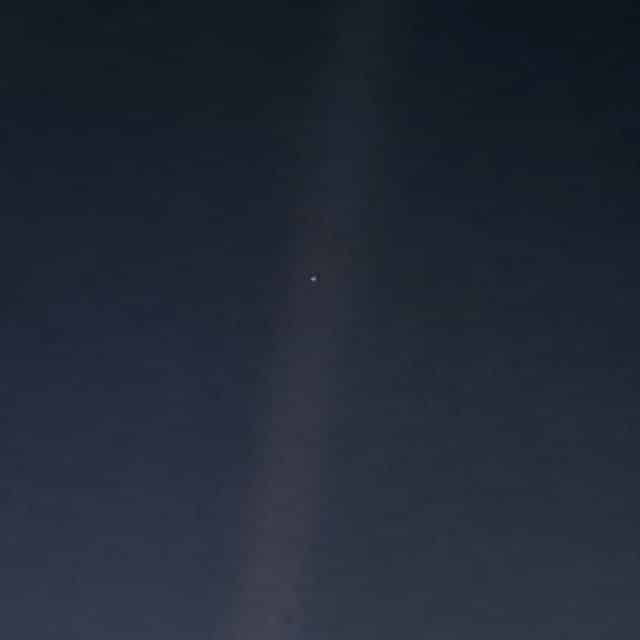The pale blue dot
A small blue dot in the vastness of space
A small blue dot in the vastness of space
A picture is often worth a thousand words. This image was taken by the Voyager spacecraft when it was six billion kilometres away from the Earth. A small blue dot in the vastness of space.

Scientists have estimated that there are over 1 trillion stars in the Milky Way. They have also speculated that there are millions of galaxies in the Universe, so the numbers are enormous. On that estimate, there must be thousands of earths circling other suns in other galaxies.
However, Albert Einstein’s famous equation E=MC squared states in simple terms that at the speed of light, mass becomes infinite. This means that anything which has mass (and that includes us) cannot go beyond the speed of light. Whilst we’re not alone, we inhabit a small planet on the edge of an ordinary galaxy. Nobody is going to find us. The odds would be something akin to finding a blue sapphire the size of a grain of sand on a lonely beach.
As far as we are concerned, there is only one Earth.
Unfortunately we are not taking care of our earth. Since the advent of the Industrial revolution 150 years ago we have been emitting harmful gases such as carbon dioxide and Methane at an ever increasing rate. Plants and Trees in particular, absorb carbon dioxide, but we are busy cutting down our rain forests thereby reducing the ability of the forests to absorb the carbon Dioxide we are emitting. Furthermore, we are polluting our oceans, particularly with plastic waste.
There are also more people alive today than have ever died. As the population of the earth increases year on year, so the needs of humans demand more of the earth’s natural resources. As nations become more developed, this trend will continue at a greater and greater pace.
The development of modern agriculture fuelled by the needs of an expanding world population has added to the amount of greenhouse gases emitted. Greenhouse gas emissions from all sources in Brazil and Indonesia are double those from fossil fuels alone. This is a direct consequence of massive deforestation in those countries. Trees capture carbon. Chop the tree down and it releases its captured carbon and stops capturing any more.
When l was a child, my mother walked into town and bought food every day. Vegetables, fruit, dairy and meat products were bought unpackaged from individual shops, and the food consumed the same day. The development of Supermarkets has changed all that. Products are packaged so that instead of shopping every day, the weekly shop has become the norm.
Supermarkets require a large site and are therefore mostly located on the outskirts of a town. This, together with a larger quantity of food being purchased on less frequent shopping trips, generally requires a car to transport it.
The changes in the way we purchase food have required more sophisticated packaging. In particular, the requirement for increased product shelf life. Using dissimilar materials such as PET/PE has enabled extended shelf life for many products, but the downside is that these materials are not able to be recycled. They can only be burnt or landfilled. They also do not degrade within a reasonable period of time, so landfilling them is not the answer.
We need to develop packaging which enables food to have extended shelf life but has the ability to be recycled or degrade harmlessly.
At Tyler Packaging, we have developed packaging which provides both of these options. We continue to investigate other materials and technology which provide a better way to package your products whilst minimising environmental damage. If you are ready to make more sustainable choices for your brand, get in touch with us today and let’s discuss your requirements.
Want to know more about how our packaging solutions can help your business with its goals? Fill in the form and we’ll get back to you as soon as we can.